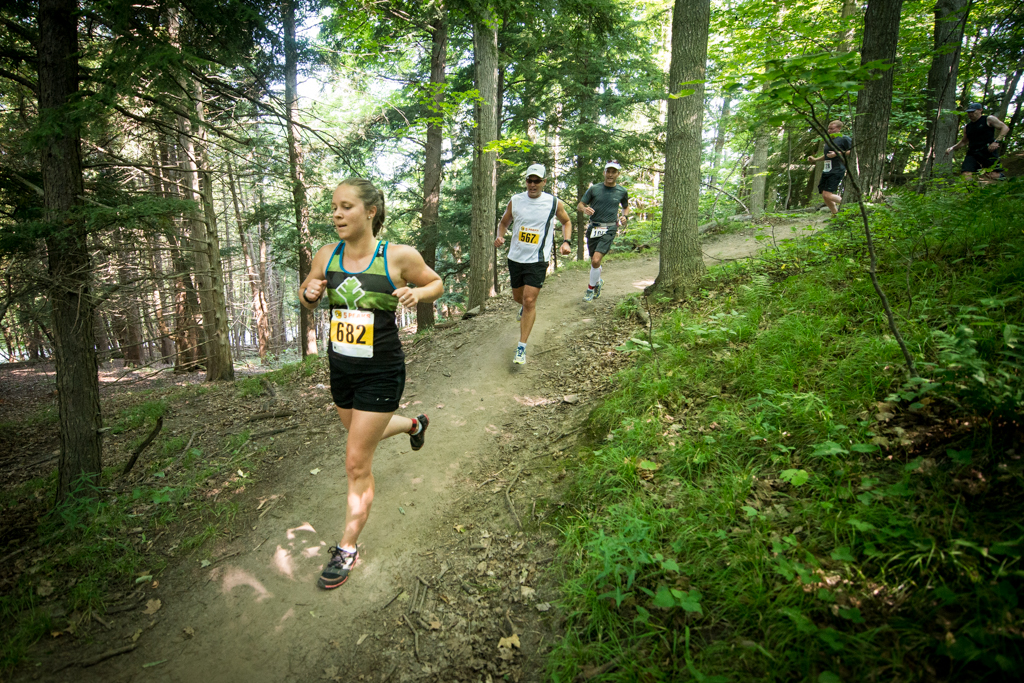Practice downhill running to improve form and conditioning


We’ve all been told to run hills as part of our training but we’re usually advised to run uphill — intervals, sprints — and then take it easy back down.
Running up hills build strength and power. It has been called “speed training in disguise” and also develops mental toughness for when we’re faced with a pesky elevation change mid-run or race.
But how often do you practice running down the hill?
For most runners, picking up the pace happens pretty naturally on a downhill section and is often considered the easier part of a run or race. Yet practicing concerted efforts in the form of downhill intervals or pick-ups are usually rare in training plans.
Practicing downhill running can afford a number of important benefits. The most important of these is improved running form. How often do you find yourself running out of control when flying down a hill? Your arms flail, you lean further back and your stride length increases. These are all examples of inefficient running form and also risk factors for injury.
Instead, try to keep your arm carriage high and close to the body. Resist the urge to lean backwards but rather “stand tall” or even lean slightly forwards. Quicken your stride and leg turnover to account for your faster speed. Most importantly, make sure you remain in control. Your speed should indeed increase but your perceived effort should not.
A second benefit to downhill running is a conditioning of the muscles to tolerate greater forces and impact. When running downhill, we often engage our quadriceps to hit the brakes and slow us down. This braking impulse which requires the contraction of an expanding muscle is also known as eccentric muscle contraction and is the greatest source of muscle damage. It’s responsible for the delayed muscle soreness we feel one to two days later. Ask anyone who has run Boston how their quads feel on Tuesday and they’ll tell you what it’s like.
By practicing controlled downhill running, you condition the muscles, and particularly the quads, to tolerate and respond to greater amounts of eccentric contraction and decrease muscle damage.
To practice downhill running or add specific downhill training, simply use the same hill or hilly route you use for uphill running. But instead of speeding up the hills, focus on better form while running down and try to increase your speed without increasing your effort. You can do this quite simply without worrying about time, distance or pace but instead focusing only on effort. You can also try adding measured intervals or timed pick-ups at a particular speed/pace.
Whether you’re training for a downhill race or simply want to improve your running form and conditioning, downhill running can and should be an important addition to your regular running routine.


